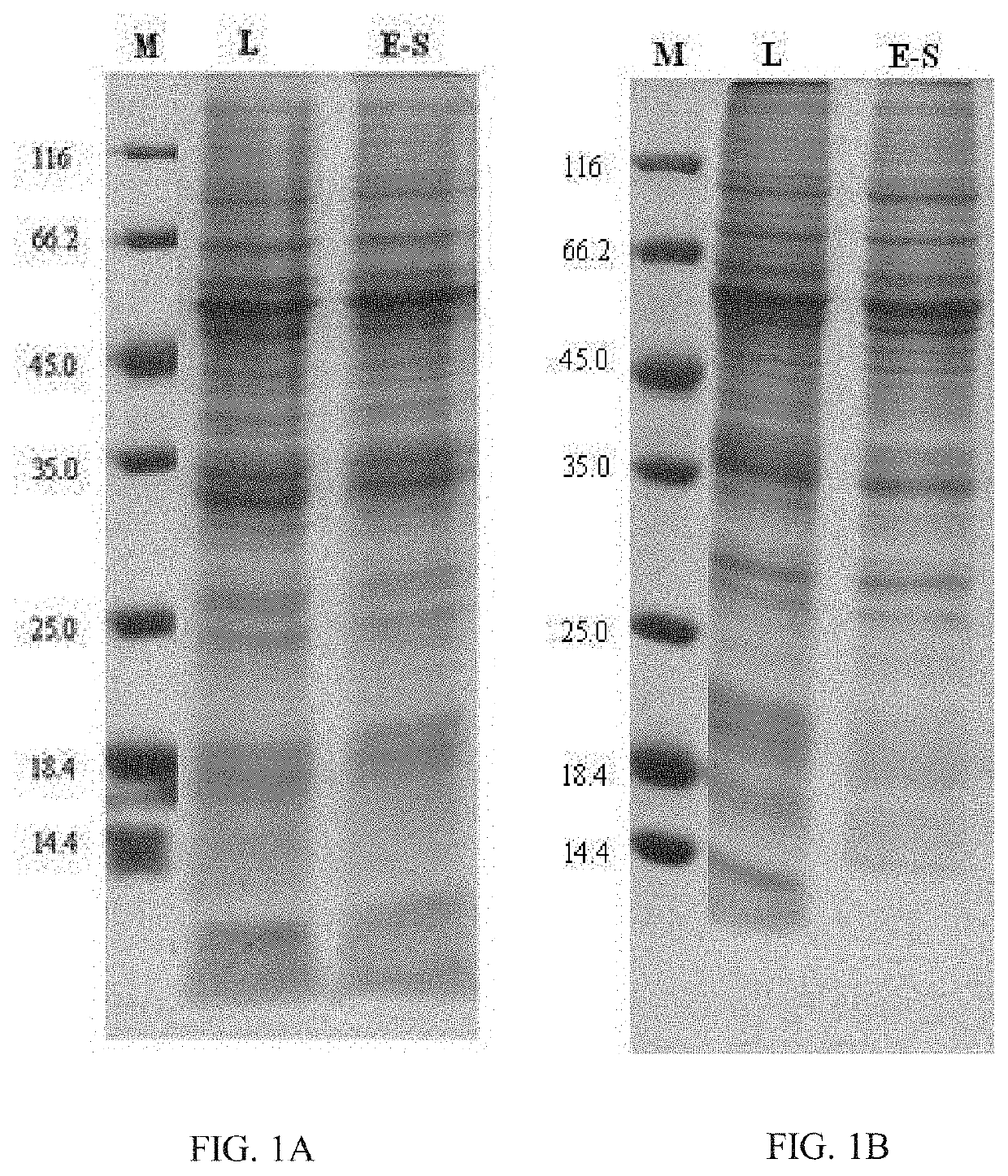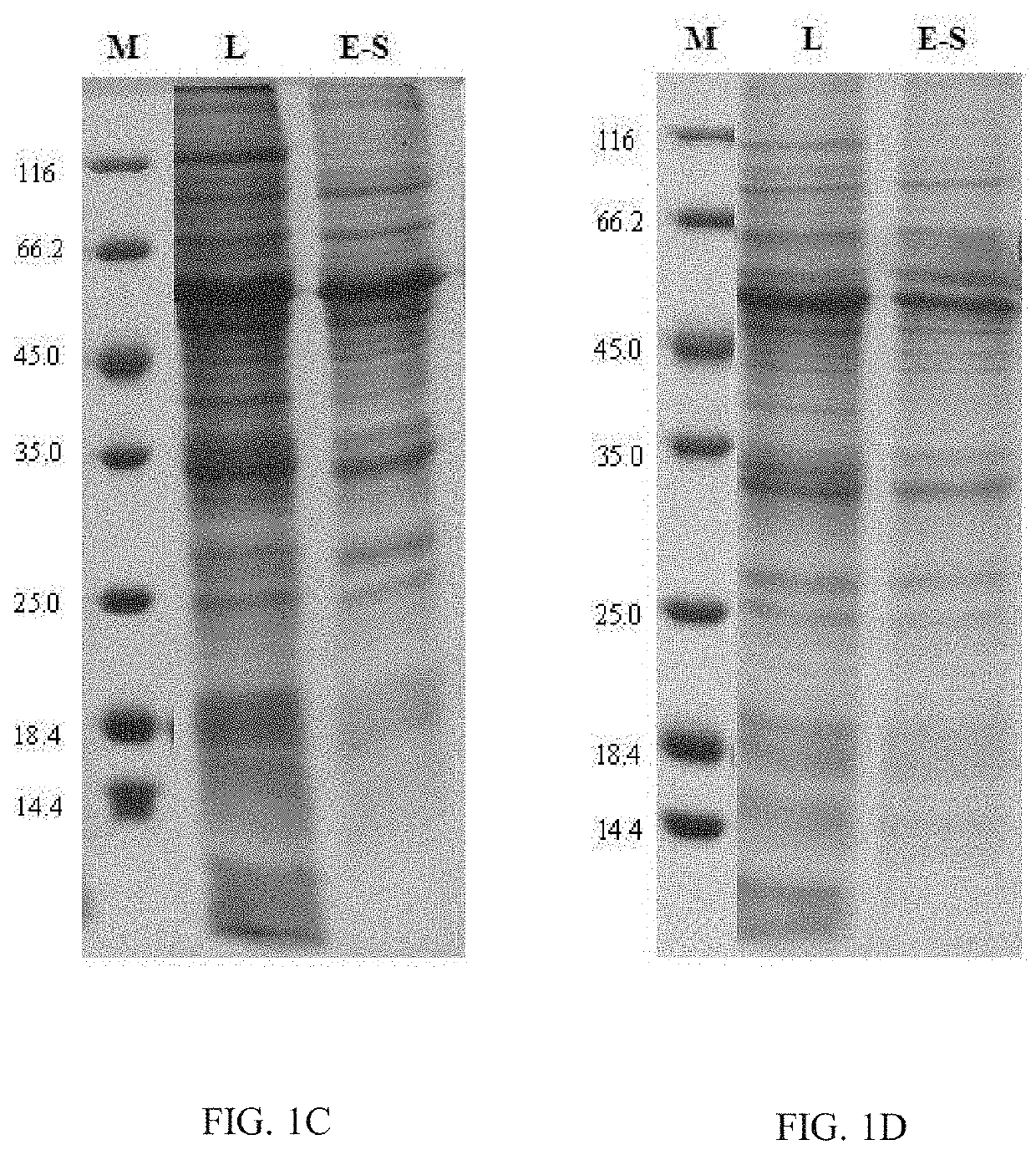Chimeric Papilloma Virus L1 Protein
a papilloma virus and l1 protein technology, applied in the field can solve the problems of complex production process, low yield, and inability to easily purify protein, and achieve the effect of improving the expression level and solubility of hpv l1 protein, low yield and easy industrialization
- Summary
- Abstract
- Description
- Claims
- Application Information
AI Technical Summary
Benefits of technology
Problems solved by technology
Method used
Image
Examples
example 1
Construction of Chimeric Genes
Example 1.1
Construction of a Chimeric Gene with the C-Terminus of HPV6 L1 Substituted with the C-Terminus of HPV33 L1
[0138]1.1.1 Construction of pFB-HPV6 L1 as the Template
[0139]The HPV6 L1 gene with the KpnI and XbaI cleavage sites at both ends of the synthesized sequences was synthesized by Thermo Fisher [formerly Invitrogen (Shanghai) Trading Co.], its sequence is shown in SEQ ID NO: 5. The plasmid pcDNA3-HPV6-L1 comprising the nucleotide sequence encoding amino acid 1-500 of HPV6 L1 was obtained by ligating the synthesized gene fragment with pcDNA3 vector (distributor: Thermo Fisher) at KpnI and XbaI cleavage sites.
[0140]The obtained pcDNA3-HPV6-L1 plasmid was subjected to double enzyme digestion with KpnI and XbaI to obtain a gene fragment of HPV6 L1 (1-500). The fragment was then ligated with the KpnI / XbaI double digested pFastBac™ 1 vector (distributor: Thermo Fisher) to obtain a rod vector containing the HPV6 L1 (1-500) gene fragment, named as p...
example 1.2
Construction of Chimeric Gene with the C-Terminus of HPV11 L1 Substituted by the C-Terminus of HPV33 L1
[0156]The experimental methods and procedures were the same as in Example 1.1, see Appendix 2 for relevant sequences.
example 1.3
Construction of a Chimeric Gene with the C-Terminus of HPV16 L1 Substituted by the C-Terminus of HPV33 L1
[0157]The experimental method and procedure were the same as in Example 1.1, see Appendix 3 for relevant sequences.
PUM
| Property | Measurement | Unit |
|---|---|---|
| molecular weight | aaaaa | aaaaa |
| diameter | aaaaa | aaaaa |
| temperature | aaaaa | aaaaa |
Abstract
Description
Claims
Application Information
 Login to View More
Login to View More - R&D
- Intellectual Property
- Life Sciences
- Materials
- Tech Scout
- Unparalleled Data Quality
- Higher Quality Content
- 60% Fewer Hallucinations
Browse by: Latest US Patents, China's latest patents, Technical Efficacy Thesaurus, Application Domain, Technology Topic, Popular Technical Reports.
© 2025 PatSnap. All rights reserved.Legal|Privacy policy|Modern Slavery Act Transparency Statement|Sitemap|About US| Contact US: help@patsnap.com



